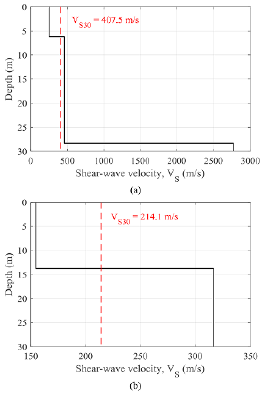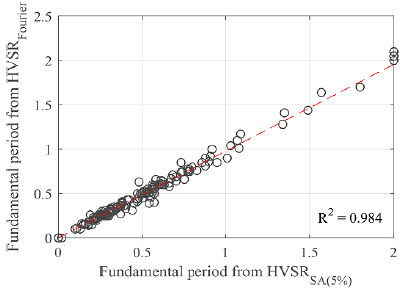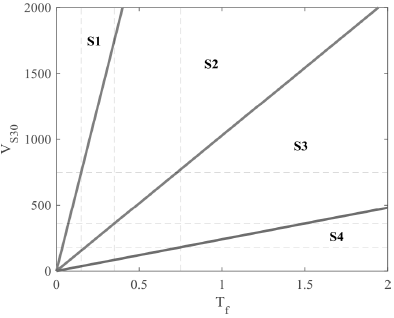Introduction
Costa Rica is considered one of the countries with the greater seismicity of the region. Its complex tectonic framework, subduction zone and active volcanism in the continental zone, has motivated to develop more studies to reduce the seismic risk of the country (Protti and McNally 1994; Quintero and Güendel 2000; Moya-Fernández et al. 2020). In seismic risk studies, three features must be taken into account: the hazard, vulnerability and damage value. A correct definition of the seismic hazard is essential to obtain reliable results. Seismic sources, site characterization and ground motion prediction models must be defined (Douglas 2017; Pinzón et al. 2019a). Several parameters have been used as proxy to define the seismic site conditions based on the topography, geology, site fundamental period (or frequency) and shear-wave velocity of the soil profile. Among these, the most used is the average shear-wave velocity in the top 30 m of the soil profile (V S30 ). In United States, the NEHRP (BSSC 2003) and the ASCE 7-16 (ASCE 2017) proposed six site classes based on V s30 from A (hard rock, V S30 > 1500 m/s) to F (soil with special condition). The Costa Rican Seismic Code (CRSC) (CFIA 2016) uses an equivalent classification, based on V s30 , varying only nomenclature (Si to S4) (Dobry et al. 2000).
The V S30 is estimated using the following expression:
where d i is the thickness of each soil layer in the profile until it reaches 30 m deep, V S¡ is the shear-wave velocity of each layer in m/s and N is the number of layers until it reaches the 30 m.
Recent studies show some limitations and problems of using V S30 to classify sites (Steidl 2000; di Alessandro et al. 2012; Pinzón et al. 2019a). Some of these limitations are the limited disposal of near-surface shear-wave data at strong-motion sites, the complexity of data acquisition, and the fact that these classifications do not consider the effect of the thickness of soft sediments. As an alternative, classifications based on the site fundamental period (Tf) have been used (Zhao et al. 2006; Ghasemi et al. 2009; di Alessandro et al. 2012; Pinzón et al. 2019a). The site fundamental period is a parameter that characterizes the dynamics conditions of the soil and has been used as a proxy for soil amplification in ground-motion prediction models (di Alessandro et al. 2012). There are different methods to estimate the fundamental period, but the most used are those based on the horizontal-to-vertical spectral ratios (HVSR). One is the conventional HVSR with the Fourier amplitude spectra from the S-wave window. This approach has been used to determine different dynamic characteristics of the ground through micrometer measurements (Nakamura 1989; Alfaro et al. 2001; Caselles et al. 2010) and strong-motions from earthquakes (Nagashima et al. 2014). The ratio is defined by the following expression:
where H F and V F are the horizontal and vertical Fourier amplitude spectra of ground-motion determined with the S-wave window, respectively.
Another of the most recently used technique is the one based on the proposal of Zhao et al. (2006). With this approach, a site classification for Japan was determined from all the seismic records available on each station (Zhao et al. 2006). The method is based on the estimation of the spectral ratio H/V from the acceleration response spectra with a 5% of damping for the horizontal components (SA H ) and the vertical (SA V ) (see Equation 3).
Zhao et al. (2006) found that the use of averages among all the HVSR obtained at each station eliminates extreme peaks or anomalies. Besides, they observed that these averages are not strongly affected if data is segregated by hypocentral distance, magnitude or depth.
In Costa Rica, the strong-motion network (CRSMN) operates since 1983 and is administrated by the Earthquake Engineering Laboratory at the University of Costa Rica (LIS-UCR for its acronym in Spanish). The LIS-UCR is in charge of recording, processing and storing all acceleration records for academic and research purposes. The network has more than 150 active accelerometric stations around the country. Further details about the network can be found in Moya-Fernández et al. (2020).
V S30 measurements on each station is essential in order to classify the site conditions of this network based on existing regulations. The main issue is that only a third of the stations have this kind of measures. The lack of data due to the high cost of measurements and other issues, introduces uncertainty in the estimation of site conditions that directly affect the seismic hazard studies carried out in the country. In recent studies, several relations between the site fundamental period, the topography and the V s30 were found (Wald and Allen 2007; Cadet et al. 2011; Pinzón et al. 2019b). These relations cannot be used to classify Costa Rican stations since they depend on the geomorphology of the region. The main objective of this study is to classify the sites of the accelerometric stations of the CRSMN, considering the current seismic regulations and data limitation. To do this, a relation between the site fundamental period and the V S30 is defined to be able to classify stations that do not have V S30 measurements.
Average shear-wave velocity of the top 30 m (V S30 )
In the last two years, V S30 have been measured in 52 accelerometric stations (33% of the network) with the aim of improving the existing classification. To obtain V S30 values, the stations of the CRSMN were scanned using the multichannel analysis of surface waves (MASW) geophysical method. The MASW is one of the most used seismic recognition methods where the elastic condition (stiffness) of the soil is evaluated. In this method, the velocity of the surface-waves is measured at different frequencies, obtaining the depth variation of the shear-wave velocity (V S ) from the measured soil profile. The variation of velocity at different frequencies is mainly attributed to the stratification of the S-waves velocities whose values are obtained with a numerical inversion system. In Figure 1, the shear-wave velocity profile from the accelerometric stations Puntarenas-Cóbano (PCOB) and Puntarenas-Paquera (PPQR) are presented. These stations present V S30 values of 407.5 and 214.1 m/s respectively.
The fundamental period through horizontal-to-vertical spectral ratios (HVSR)
Because almost 70% of the stations do not have measured values of V S30 , it was decided to determine the fundamental period of each site (station) through horizontal-to-vertical spectral ratios (HVSR) and fill the gap produced by the lack of information. To estimate site fundamental periods, the average of the HVSR obtained from all the records available at each station is calculated with HVSR SA(5%) and HVSR Fourier . Then, the average of both fundamental periods (from both methods) is estimated, obtaining a unique value per station. Records with high acceleration values were discarded (PGA > 0.30 g), preventing fundamental period values from high deformations that could lead to a nonlinear response of the soil (Pinzón et al. 2019a). In Figure 2, the results obtained from the HVSR of the accelerometric stations PCOB and PPQR are exposed. The HVSR are presented normalized by the maximum value. Site fundamental periods of 0.25 and 0.63 s were obtained in PCOB and PPQR stations respectively. HVSR Fourier presents several peaks while the HVSR^ (5%) has a smoother shape. In both cases, the fundamental period was properly captured. This method was applied to the entire network, obtaining the site fundamental period at the 157 stations. A comparison of the results obtained with the HVSR SA(5%) , and HVSR Fourier for all the stations is shown in Figure 3.
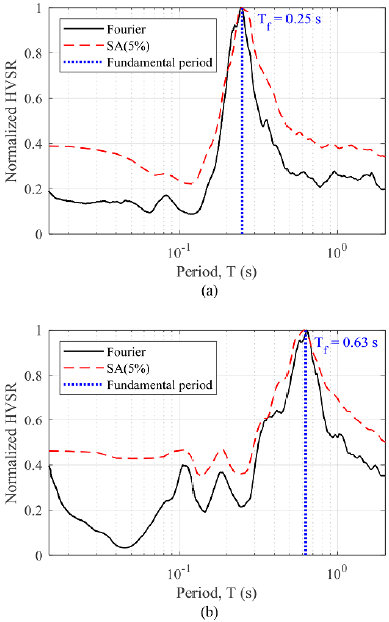
Figure 2 Horizontal-to-vertical spectral ratios normalized by the maximum value and the site fundamental period from stations (a) PCOB and (b) PPQR.
V s30 and site fundamental period relation
The V S30 values measured were related to their site fundamental period. Results from the relation are observed in Figure 4. As seen in the figure, the relation follows a bilinear trend with a constant value of V S30 (260 m/s) in sites with a fundamental period higher than 0.5 s. Similar results were obtained in the United States from Central and Eastern North America (CENA) sites (Hassani and Atkinson 2016). Figure 4b shows the relation in linear scale. It is observed that the models fit the measured data reasonably well. The dispersion obtained is similar to that obtained in other studies (see Figure 9 from Hassani and Atkinson, 2016, and Figure 8 from Ghofrani and Atkinson, 2014).
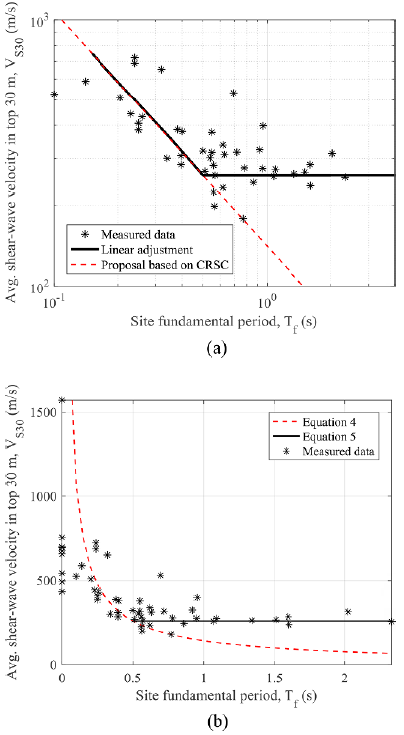
Figure 4 Measured V s30 values at the station of the Costa Rican Strong-Motion Network plotted against site fundamental period values obtained from HVSR. (a) The bilinear model (continuous line - Equation 4 for periods < 0.5 s and Equation 5 for periods ≥ 0.5 s) and the proposed model based on the Costa Rican Seismic Code (dashed line - Equation 4) are depicted. (b) Plot in linear scale.
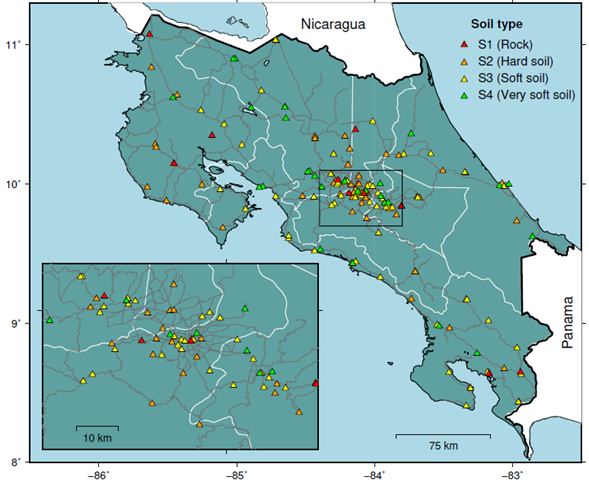
Figure 6 Map with the geographical distribution of the accelerometric stations with the assigned soil class.
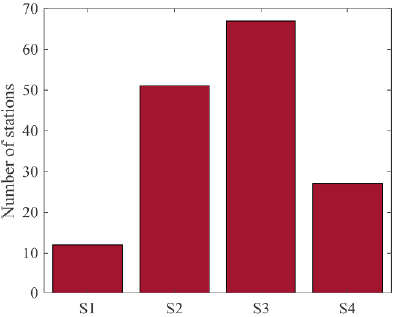
Figure 7 (a) Number of stations per site class and (b) Mean HVSR from all the stations per site class.
The bilinear model is defined by the following equations:
As seen in the results, some sites with a null period have V S30 values that are not indicative of a rock outcrop. It is important to note that, in those cases, a T f = 0 s was assigned since the fundamental period was not identifiable, presenting a flat H/V with amplitudes < 2. For fundamental periods of the soil deposit larger than 0.5 s, the graph shows that sites with similar V S30 can have significantly different T f values. This outcome, observed also in other studies (Hassani and Atkinson, 2016), is quite significant. This behavior points a significant drawback of the V S30 approach for seismic site classification. For instance, in those cases, the considered 30 m might not be sufficient to characterize the vibration period of the soil deposit and, therefore, V S30 might not provide a reasonable proxy of the seismic response of the site.
On Table 1, we have made a proposal relation between the V S30 used on the CRSC and the soil fundamental period. Sites with fundamental periods lower than 0.15 s are considered rock sites (Si), between 0.15 and 0.35 s stiff soils (S2), 0.35 and 0.75 s soft soils (S3) and sites with fundamental period higher than 0.75 s are very soft soils (S4). To assign this classification, only Equation 4 was used (see the dashed line of Fig. 4). Equation 5 was neglected since sites with very soft soils (S4) could not be classified in terms of V S30 . Although, in terms of safety (design), this proposal can be beneficial since sites with periods larger than 0.50 s will result in a lower classification compared to the V S30 approach, it is important to note that the use of Equation 4 for periods larger than 0.50 s is arbitrary and not supported with data. Probably, as mentioned before, the considered 30 m might not be sufficient to identify the fundamental period of the soil deposit. Nevertheless, as can be seen in Zhao et al. (2006) and di Alessandro et al. (2012), a period of 0.60 s has been used as a limit to classify soils S4 (Equivalent to NEHRP soil E), so our proposal at 0.75 s, is not very different from those already proposed.
Table 1 Site classification of the Costa Rican Seismic Code, NEHRP equivalence, VS30 ranges and site fundamental periods proposed.
| Site class based on Costa Rican Seismic Code (CRSC) (CFIA 2016) | NEHRP (BSSC 2003) equivalence | Shear-wave velocity of top 30 m | Site fundamental period |
|---|---|---|---|
| S1 (rock) | A+B | V s30 ≥ 750 m/s | T f < 0.15 s |
| S2 (stiff soil) | C | 360 < V s30 ≤ 750 m/s | 0.15 ≤ T f < 0.35 s |
| S3 (soft soil) | D | 180 < V s30 ≤ 360 m/s | 0.35 ≤ T f < 0.75 s |
| S4 (very soft soil) | E | V s30 ≤ 180 m/s | T f ≥ 0.75 s |
A graphic with three-lines and four-areas is proposed to classify stations with both V S30 and site fundamental period values (see Fig. 5). Each area (triangle) represents a site class based on the CRSC. The lines are plotted from the intersection between values assigned to each site class (see Table 1). The assigned classification at each station will be the one corresponding to the area where the pair of values (V s30 - T f ) falls. Although this definition is arbitrary, we believe is a reasonable limit according to the available information we have presented in this paper. With this proposal, both parameters take relevance and are compensated, reducing the differences due to possible errors in measurements or interpretations. In this way, we can guarantee that sites will have similar geodynamic characteristics, and consequently possible error sources in the use of accelerograms are reduced (e.g., in the development of ground motion prediction equations or the dynamic analysis of structures). Using this classification, stations PCOB and PPQR are classified as S2 and S3 respectively.
CRSMN site characterization
From the 157 stations of the network, 52 were classified with the proposal described above and the other 105 were categorized only with their site fundamental period using Table 1 ranges. In Figure 6, a map of Costa Rica with the geographic distribution of the accelerometric stations and their assigned site class is shown. A total of 12 stations were classified as rock sites, 52 as stiff soils, 67 as soft soils and 26 as very soft soil (see Fig. 7). A complete list with the assigned site class of each station is available at the LIS-UCR website (http://www.crsmd.lis.ucr.ac.cr/?id=Estaciones).
In Figure 7b, the mean value of the HVSR per site class, estimated from ratios of all the stations is exposed. The shapes of the mean HVSR values correspond to the expected. The rocky sites have a flat shape with amplification values less than two, while sites S2, S3 and S4 have amplification values around three in the range of periods assigned on each site class (see Table 1). The H/V spectral ratio for S4 soils has a peak zone from 0.9 to 1.5 seconds that is reasonably consistent with the definition of this site class being dominant periods larger than 0.75 seconds.
Conclusions
In this study, a site classification has been assigned to the stations of the Costa Rican Strong-Motion Network. A total of 157 stations were classified based on V S30 measurements and the site fundamental period values obtained from HVSR of recorded ground-motions. This classification arises from the relationship between the T f and the V S30 values measured in 52 stations. Because the current classification is based on the V S3(P the proposed one has the advantage that stations that do not have V S30 measurements can be classified using the T f calculated from the earthquake acceleration records. With this classification, since it considers the fundamental period, we guarantee that sites assigned in the same class have an equivalent dynamic response. This fact plays an important role in the assessment of structures when ground-motion records are used for deterministic and/or probabilistic time-history analyses, decreasing uncertainty and improving the results for a specific region. The influence of this classification on the definition of new ground motion prediction model, compared to the existing/traditional ones remains a significant and interesting issue.
Although we are aware of the limitations of the V S30 as a parameter to classify sites, based on the results obtained in this study, we were forced to use it in this study since it is the basis of the current regulations. In this sense, we would like to recommend to those responsible of the seismic regulations to reconsider using V S30 as a measure to classify sites. From our perspective, this parameter has clear deficiencies, which do not allow us to accurately classify soft soil sites (T ≥ 0.5 s), as is observed in Figure 4. Therefore, we believe that it is necessary to use measures that guarantee a reliable site classification, grouping sites with similar geodynamic characteristics, as is the case of the use of the site fundamental period as proxy.
















